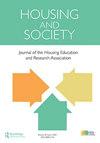德克萨斯州未满足的住房和住房灾害需求的历史基线案例研究:2005年德克萨斯州卡特里娜飓风和丽塔飓风的后果
Q2 Social Sciences
引用次数: 2
摘要
研究人员对灾害避难和住房进行了广泛的研究;然而,很少有研究经验性地考察了灾害期间和灾后住房和住房需求如何变化的纵向模式。本研究调查了德克萨斯州连续飓风灾害期间未满足的住房和住房需求的类型和时间,使用了德克萨斯州2-1-1网络在德克萨斯州254个县(包括灾区以及疏散路线和目的地)的呼叫者未满足需求的实时数据。灾害管理人员和全州社区都利用德州2-1-1来提供信息和转诊,以满足非紧急需要。五个月的研究期间包括卡特里娜飓风之前的基线,每次灾难期间的疏散和影响,以及之后的短期恢复。在这些飓风之前和之后,最常见的未满足住房需求类型源于与租赁住房有关的财务问题。在灾害紧急阶段,与住房有关的需求最为普遍。在整个灾难阶段,与房主相关的未满足需求是最不常见的。未满足的住房需求在灾难阶段有不同的模式,而租房者和房主的需求随着时间的推移有更细微的差异。这项独特的研究提供了有关弱势群体与住房需求相关的准入障碍的实用信息,并利用实时数据支持了与灾害有关的庇护所和住房的理论模型。本文章由计算机程序翻译,如有差异,请以英文原文为准。
Historical baseline case study of unmet shelter and housing disaster needs throughout Texas: the aftermath of Hurricanes Katrina and Rita in Texas, 2005
ABSTRACT Researchers have extensively studied disaster sheltering and housing; however, little research has empirically examined longitudinal patterns of how shelter and housing needs change during and after disasters. This study investigated types and timing of unmet shelter and housing needs during sequential hurricane disasters in Texas using Texas 2-1-1 Network’s real-time data of callers’ unmet needs throughout Texas’ 254 counties, including disaster areas as well as evacuation routes and destinations. Texas 2-1-1 has been used by disaster managers and communities state-wide for information and referral for non-emergency needs. The 5-month study period includes a baseline before Hurricane Katrina, evacuation and impact during each disaster, and short-term recovery afterward. Before and following these hurricanes, the most common types of unmet housing needs stemmed from financial issues related to rental housing. During disaster emergency phases, shelter-related needs were most common. Unmet needs related to homeowners were least frequent throughout the disaster phases. Unmet shelter needs had patterns differing by disaster phase compared to more subtle differences over time in renter and homeowner needs. This unique study provides practical information about vulnerable populations’ access barriers relating to housing needs and supports the theoretical model of disaster-related sheltering and housing using real-time data.
求助全文
通过发布文献求助,成功后即可免费获取论文全文。
去求助
来源期刊

Housing and Society
Social Sciences-Urban Studies
CiteScore
2.30
自引率
0.00%
发文量
10
期刊介绍:
Housing and Society is the journal of the Housing Education and Research Association (HERA). The journal supports the mission of HERA by providing for the dissemination of research and other scholarly work. Submissions from a broad range of perspectives are encouraged. Topics in housing include: policy, design, social aspects, gerontology, behavioral aspects, energy/environment, equipment, interiors, economics, theory/model development, education, and program development or evaluation. The journal welcomes the submission of original research articles, notes and commentaries. Notes are shorter manuscripts presenting succinct information on housing related to one of the following categories: - Research: exploratory or not heavily theory-based or statistically analyzed - Academic: innovative teaching ideas - Program: development, implementation, and/or evaluation of Cooperative Extension or other housing programming efforts - Policy: examination of policy impact, comparative analysis, and/or need to achieve housing goals - Reviews: books, documentaries, etc.
 求助内容:
求助内容: 应助结果提醒方式:
应助结果提醒方式:


